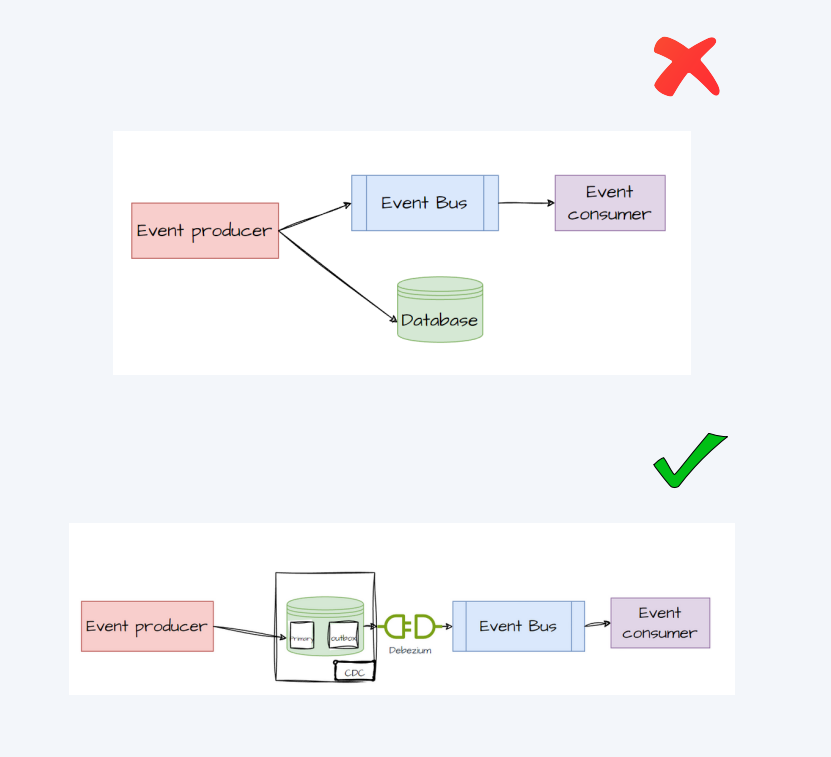Transactional Outbox Pattern
 Gireesh Kapila
Gireesh KapilaIn distributed systems, maintaining data consistency and ensuring reliable message delivery can be challenging. The transactional outbox pattern is a robust solution to address these concerns, particularly in microservice architectures.
The Challenge of Dual Writes
In a distributed system, a common scenario involves updating a database and sending a message to another service. This is known as a dual write operation. Ensuring that both the database update and message delivery succeed in the same transaction is crucial for data consistency.
However, traditional approaches often face challenges in handling dual writes. Sending a message directly within the transaction can lead to tight coupling between the producing and consuming services. If the message delivery fails, rolling back the transaction can have unintended consequences. Moreover, not all messaging systems support distributed transactions.
The Transactional Outbox Pattern
The transactional outbox pattern addresses the challenges of dual writes by introducing an intermediate message store called the outbox. This can just be another table in the same database so that the data persistence can happen in a transactional way. This pattern decouples message delivery from the database update, allowing for asynchronous processing and fault tolerance.
How it Works
1. Event Generation: Upon an event occurrence, the producing service generates a message containing the event details.
2. Outbox Persistence: Instead of directly sending the message, the producing service stores it in the outbox table as part of the transaction. This ensures that the message is persisted along with the database update in the same transaction.
3. Asynchronous Message Delivery: There are a few ways to handle this.
a. A separate message delivery process periodically scans the outbox table for unprocessed messages. For each message, it attempts to deliver it to the consuming service.
b. Rather than polling the outbox table, It's a good option to choose Change Data Capture (CDC) which is log based and streams the changes without the overhead of polling the table. Many popular databases like MySQL, SQL Server, Postgres etc support CDC. Debezium is a great tool that comes with connectors for different databases to capture the change logs and processes to a event bus like Kafka.
4. Idempotent Delivery: The consuming service handles messages idempotently, ensuring that processing a message multiple times doesn't lead to unintended consequences.
5. Message Retry Mechanism: If message delivery fails, the message delivery process retries delivery attempts until the message is successfully delivered or a maximum retry limit is reached.
Reference: https://lnkd.in/gcrQQ4X

Subscribe to my newsletter
Read articles from Gireesh Kapila directly inside your inbox. Subscribe to the newsletter, and don't miss out.
Written by
